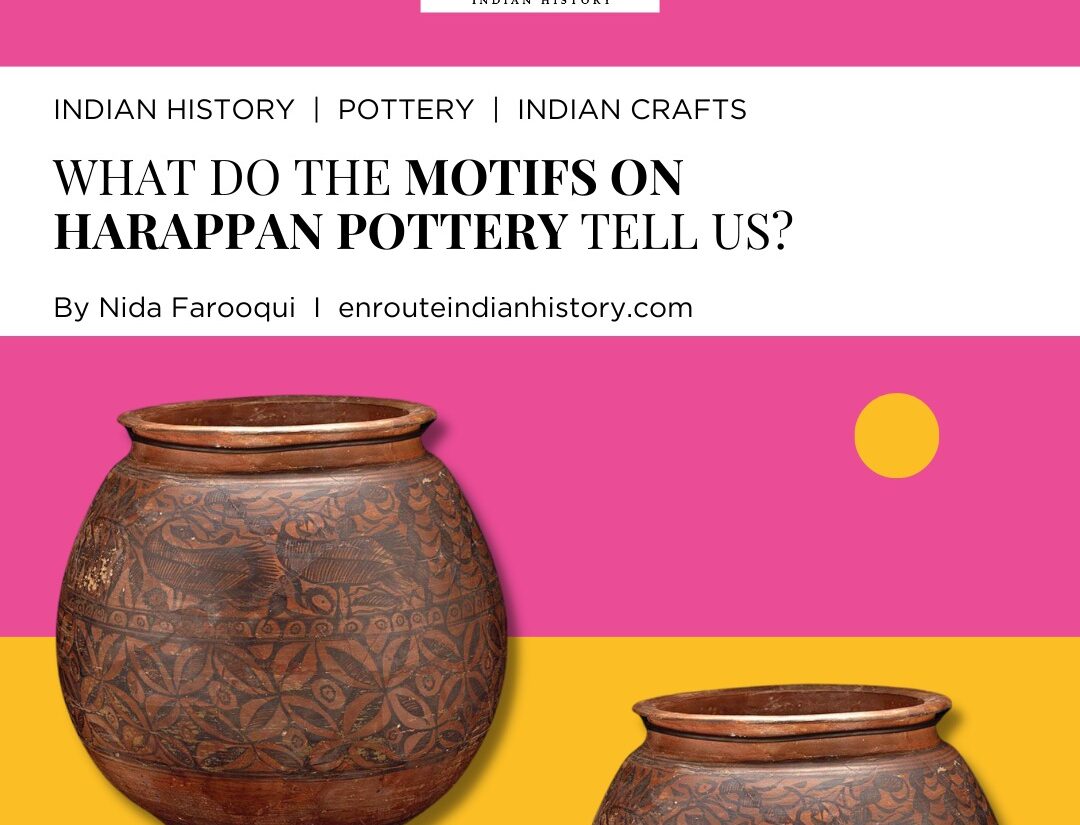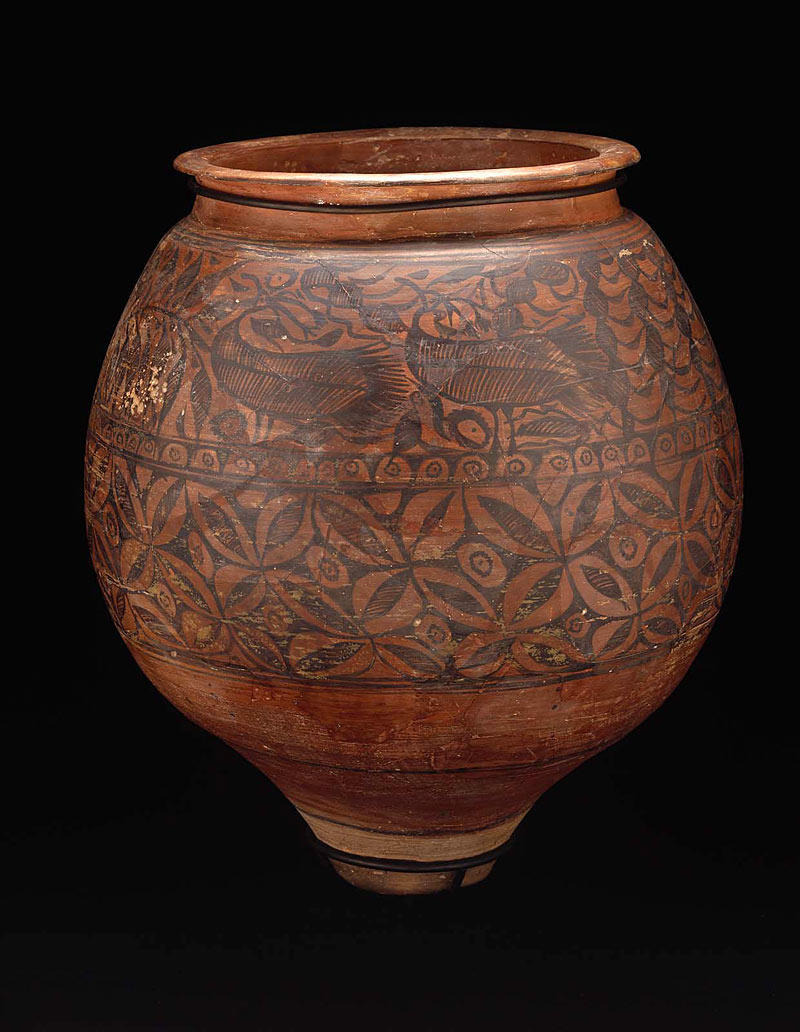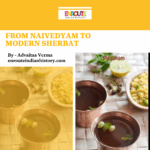
Embarking on a captivating exploration of antiquity, the Harappan civilization emerges as a riveting enigma nestled within the folds of the Indus Valley’s fertile plains, flourishing over four millennia ago. Within the treasure trove of remnants left by this ancient society, Harappan pottery takes center stage—a testament to artistic brilliance and a vessel of profound cultural expression.
This article invites you to unravel the mysteries concealed within the delicate strokes and intricate motifs that grace Harappan pottery. Dating back to the third millennium BCE, these clay vessels become more than mere artifacts; they serve as time capsules that encapsulate the essence of an advanced civilization’s beliefs, rituals, and everyday existence.
As we delve into the world of Harappan pottery motifs, we peel back layers of history to expose the artistic mastery of a bygone era. The motifs etched into these vessels are not just aesthetically pleasing; they are a visual language that offers unique insights into the lives of the Harappan people. From the symbolism of each stroke to the narratives woven into the patterns, we decipher the cultural mosaic preserved in the clay.
In the early 20th century, the discovery of Mohenjo-Daro and Harappa marked a pivotal moment in the history of undivided India, unveiling the secrets of the Harappan Civilization. Over the past 50 years, extensive research has revealed that this ancient civilization, rooted in the core of the Indus Valley, extended across a vast geographical expanse—from the Indo-Iranian borders in the west to Alamgirpur in the east (U.P.), and southward to Gujarat and as far-reaching as Daimabad in Maharashtra.
Distinguished by its unique architecture, artistry, craftsmanship, pottery, seals, script, bead industry, and trade practices, the Harappan culture has left an indelible mark on history. Notably, its ceramics, spanning different cultural periods, showcase a diverse array of motifs, adding a layer of intrigue to the archaeological narrative. While scholars have meticulously studied various aspects of Harappan pottery, including shapes, wares, manufacturing techniques, typology, and fabric analysis, there remains a scarcity of comprehensive comparative and descriptive analyses focused on painted pottery motifs.
At archaeological sites like Harappa, Mohenjo-Daro, and Chanhu-Daro, a rich assortment of motifs emerge from the excavations—horizontal lines, bands, circles, loop motifs, wavy lines, triangles, motifs adorned with fine lines, and cross-hatching patterns. Despite the wealth of information gathered on Harappan pottery, the intricate language of these painted motifs invites a closer examination, offering a nuanced understanding of the cultural and artistic nuances that defined this ancient civilization.

(Diachronic changes in the painting style of the Harappa-style pottery; Source – Harappa.com)
Harappan pottery, characterized by its vibrant red hues and robust craftsmanship, plays a pivotal role in unraveling the artistic legacy of this ancient civilization. The pottery repertoire is predominantly wheel-made, encompassing both unadorned and painted varieties. While plain pottery, often fashioned from red clay with or without a fine red slip, prevails, the painted counterparts boast red and black color schemes.

( Red and Black Pottery of Chanhudaro from Harappan period; Source – Harappa.com )
Diverse techniques were employed for embellishing these vessels, showcasing an array of geometric designs such as circles, squares, and triangles, alongside depictions of animals, birds, snakes, fish, and recurring tree patterns. The prevalence of plant motifs, including trees and pipal leaves, further enriches the visual narrative found on the pottery.

( Large Indus Valley pot with animal motifs; Source – Barakat Gallery )
Noteworthy scenes captured in the artwork include hunting scenes featuring antelopes and hunters, as well as depictions of birds perched on trees with fish in their beaks. A jar discovered at Lothal, for instance, portrays two birds with a fish beneath them, accompanied by an animal, possibly a fox, according to S. R. Rao. The ground also features a few fish.
The Harappan people showcased their ingenuity in pottery through a variety of types, including glazed, polychrome, incised, perforated, and knobbed varieties. Glazed pottery from the Harappan era stands as a pioneering example in the ancient world. Polychrome pieces, though rare, exhibit intricate geometric patterns in red, black, green, white, and yellow. Incised ware, with decorations mainly on pan bases, is a rarity, while perforated pottery, featuring large holes at the bottom and small perforations on the walls, likely served as strainers for liquids. Knobbed pottery, adorned with external knobs, adds another dimension to Harappan ceramic diversity.

(A storage jar from the Mature Harappan period, c. 2700 – 2000 BCE; Source – National Museum, New Delhi )
The functional aspects of Harappan pottery were as diverse as their forms, encompassing goblets, dishes, basins, flasks, narrow-necked vases, cylindrical bottles, tumblers, corn measures, spouted vases, and unique dishes on stands—potentially serving as offering stands or incense burners. Each vessel carries within it not just utilitarian value but also a testament to the advanced craftsmanship and artistic sensibilities of the Harappan people.
Recent archaeological findings and studies have continued to enrich our understanding of Harappan pottery, shedding light on previously unknown aspects of this ancient civilization’s ceramic legacy. Ongoing excavations have revealed that the Harappans were pioneers in the use of glazed pottery, with some of the earliest examples found in the ancient world. The glazing process involved applying a special coating to the pottery, resulting in a distinctive sheen and adding to the aesthetic appeal of the vessels. While polychrome pottery remains rare, recent discoveries highlight a more complex range of colors and patterns than previously recognized. Small vases adorned with intricate geometric designs, incorporating red, black, green, white, and yellow hues, showcase the Harappans’ advanced skills in pottery decoration. Further exploration of incised ware, previously considered rare, has unveiled subtle and symbolic decorations based on pans. These incised motifs may carry cultural or ritual significance, providing additional layers to the narrative embedded in Harappan pottery. Recent research suggests a more nuanced understanding of perforated pottery. Beyond its assumed role in straining liquids, some perforated vessels may have served specific ceremonial or ritual purposes, pointing to a deeper cultural significance attached to these unique artifacts. Archaeological investigations across different Harappan sites have unveiled regional variations in painted motifs. While certain motifs, such as geometric patterns, remain consistent, variations in the depiction of animals, plants, and symbolic elements hint at localized artistic preferences and cultural diversity within the broader Harappan civilization. An in-depth analysis of pottery manufacturing techniques has uncovered the Harappans’ advanced skills in shaping, firing, and finishing pottery. The uniform sturdiness and well-baked nature of Harappan pottery suggest a sophisticated understanding of kiln technology and firing processes.
The study of Harappan pottery serves as a portal into the artistic, technological, and cultural achievements of a civilization that thrived over four millennia ago. Recent archaeological revelations have added vibrant layers to our understanding of this ancient ceramic legacy, showcasing the ingenuity and sophistication of the Harappan people.
The pioneering use of glazed pottery, a hallmark of Harappan craftsmanship, has not only demonstrated their advanced knowledge of pottery technology but also highlighted their commitment to aesthetics. Polychrome pottery, once considered rare, now unveils a more intricate palette of colors and patterns, providing a nuanced view of the artistic diversity within this ancient culture.
The symbolic depth found in incised ware hints at the cultural and ritual significance attached to these vessels, underscoring the multi-dimensional nature of Harappan pottery. Meanwhile, the functionality of perforated pottery extends beyond mere utility, suggesting ceremonial or ritual roles, further enriching our understanding of the cultural practices of the time.
Regional variations in motifs across different Harappan sites emphasize the localized artistic preferences within the broader civilization. These variations not only showcase the diversity of the Harappan people but also hint at the interconnected yet distinct cultural landscapes that thrived across the expansive geography of the civilization.
As we uncover the secrets of Harappan pottery, each vessel emerges not just as a utilitarian artifact but as a canvas bearing the imprints of a civilization’s beliefs, rituals, and daily life. The meticulous craftsmanship, sophisticated manufacturing techniques, and intricate motifs collectively narrate a story that transcends the boundaries of time, allowing us to connect with the ancient artisans who shaped these vessels with care and purpose.
In the ongoing exploration of Harappan archaeological sites, these recent discoveries beckon us to delve deeper into the mysteries concealed within the clay. The legacy of Harappan pottery continues to captivate scholars and enthusiasts alike, inviting us to appreciate the enduring beauty and cultural significance embedded in these millennia-old artifacts. As the excavation tools of the present unveil more fragments of the past, the story of Harappan pottery remains an ever-evolving narrative, beckoning us to appreciate the profound insights it offers into the rich tapestry of our human heritage.
References
- Uesugi, Akinori. “A Note on the Diachronic Changes of the Harappan Pottery – A Preliminary Analysis.” Heritage: Journal of Multidisciplinary Studies in Archaeology, vol. vol. 1, no. 2013, 2013, pp. 356-371. Academia, https://www.academia.edu/5379464/A_Note_on_the_Diachronic_Changes_of_the_Harappan_pottery_A_Preliminary_Analysis.
- Kulkarni, Aparna S . 2022. “Thesis Title: -Harappan Painted Pottery Motifs: A Study of Aesthetic, Elements of Designs, and Textile Traditions. Research Scholar.” Www.Academia.Edu. https://www.academia.edu/76822334/Thesis_Title_Harappan_Painted_Pottery_Motifs_A_study_of_Aesthetic_Elements_of_Designs_and_Textile_Traditions_Research_Scholar.
- September 27, 2024
- 9 Min Read
- May 15, 2024
- 6 Min Read























